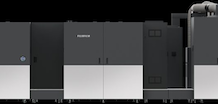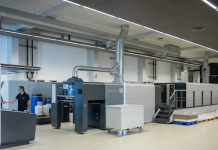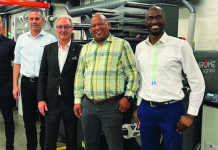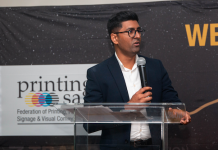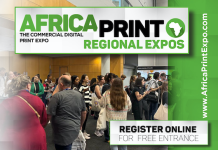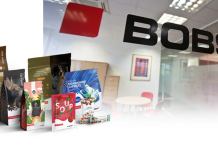Product manager Gary Stockenstroom, sales representative Pieter Gouws and sales and marketing coordinator Anja Kirton from Fujfilm Graphic Systems South Africa recently held two live webinar product discussions, inviting attendees to get better insight into the company’s Jet Press 750S inkjet press.
With travel restrictions and this year’s drupa postponed due to Covid-19, the discussions gave attendees the opportunity to see how the machine works. The Jet Press 750S is a full-colour B2 sheet-fed inkjet press, ideal for a new world of short-run print. It is plate-free, with almost no chemistry. In part 1 of the live discussion, the three panellists outlined the numerous features of the machines, which include quick-turnaround times, the running of thin stock and thick stock through the press, and its 1200dpi.

‘This is the third generation of the press – it has been on the market for a while now, and we have over 200 installations in the world. The press is robust, stable and the colours and print runs clients are after are the colours and print runs that we can deliver from the press,’ said Stockenstroom.
It also features a feeder unit, and the user can change jobs without stopping the machine. Additionally, there is no drying time for the sheets. Mark Stephenson, Fujifilm EMEA product manager, outlined that paper wastage was considered in the development of the machine. He also mentioned the importance of the machine’s automation.
Uncoated paper can be used as there is a coater on the press, and litho stock can also be pushed through the machine as well. The maximum thickness the machine can run on includes the regular option (300 microns) and a thick stock option which is more for packaging customers (600 microns). The type of inks used are water-based ink – an aqueous type – but there is also a food-safe option for packaging. Printheads are Fujifilm’s latest version of the industry renowned Dimatix Samba heads.
In part 2 of the live discussion, panellists delved deeper into the machine’s features. ‘The best part of the machine is if you look at the feeding part of it, it looks like a litho press. A litho machine minder can actually start working on the digital press with almost minimal training,’ said Gouws.
Some of the features discussed included:
Side lays and registration: for sheet alignment, with the sheets pulled to the right corner and registration every time, providing a comfortable experience for the user.
Priming system: a water-based primer added on top of the sheet (in a thin layer), so the ink won’t penetrate straight into the material.
XMF workflow software: reads data and optimises the production, prevents wastage and saves time, and can move data from one machine to another in the event of a breakdown. There is also the option of adding a bar code reader for finishing.
The following points were also discussed during the Q&A session:
– Contract proofing is generally limited to smaller devices, but the Jet Press is a contract proofer.
– The photobook space, as well as that of book covers and inserts, is the best production environment for the machine.
– Lead time to full production is around 3-6 months, with factors of shipping, installation and preparation to take into consideration.
A customer testimonial video – featuring Emmerson Press – was also shown. The company, which specialises in brochures and promotional items was the first business in the UK to invest in the Jet Press and the first to upgrade to the latest model more recently.
FUJIFILM
(+27 11) 430 5400
https://www.fujifilmgraphicsystems.co.za/




